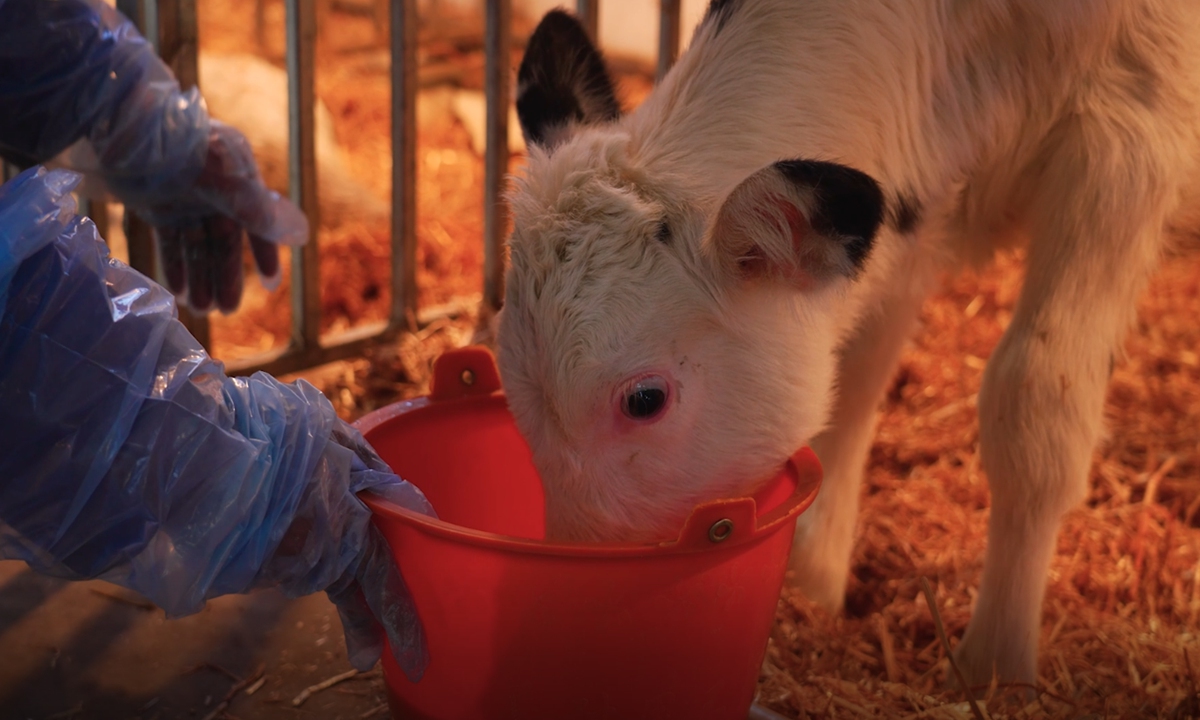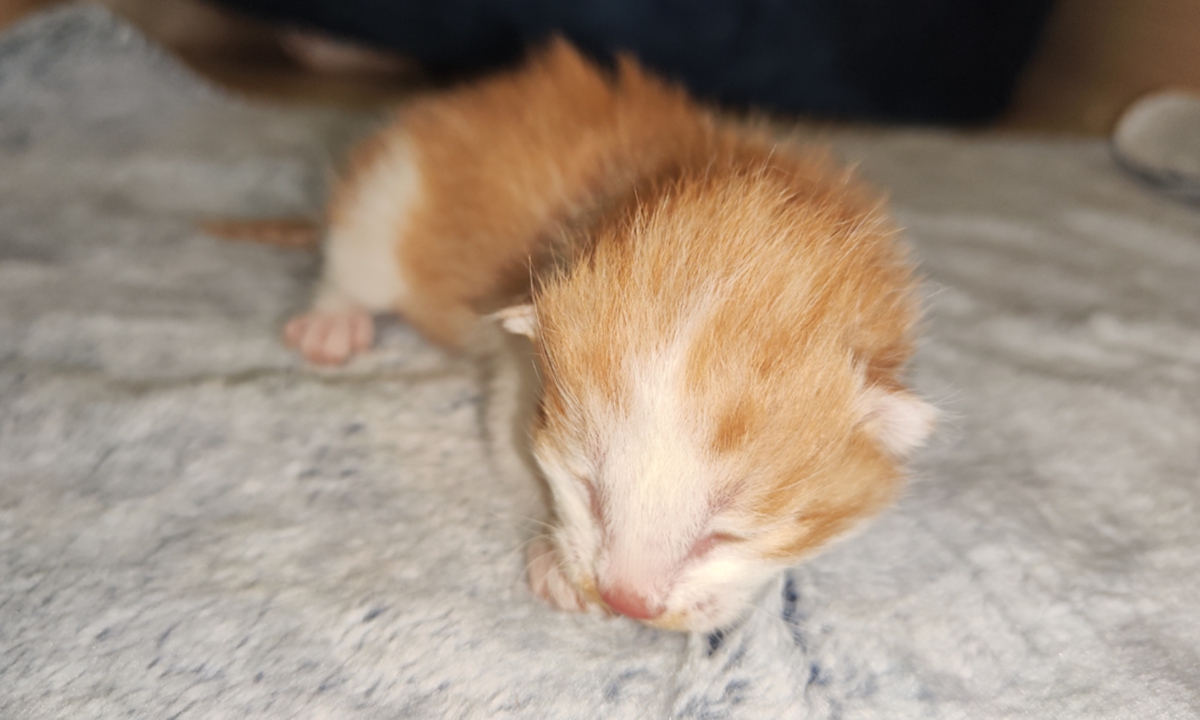
A newborn calf at a farm in Northwest China's Ningxia Hui Autonomous Region. Photo: Courtesy of Northwest A&F University
A project involving cloned super cows to ramp up dairy output is making progress in Northwest China's Ningxia Hui Autonomous Region, a scientist with the Northwest A&F University told the Global Times on Saturday.
It's been a year since the university cloned three super cows. The aim is to build up a herd of very productive cows, and work has begun to use the cloned cows to produce vitro embryos, Jin Yaping, the project leader, told the Global Times.
Last January, Jin's team made global headlines when they proclaimed the births of three cloned cows with highly desired traits -- super cows capable of producing 100 tons of milk in a lifetime.
It was the first successful effort by Chinese scientists to collect, restore and conserve the germplasm resource of "super cows" in China with the somatic cell nuclear transfer method and reproduce them, according to a press release at the time.
The cloned super cows, now termed as super high-production long-lived cows by Jin's team, are now 12 months old and early-stage work has begun to use them to produce embryos to be used at in vitro fertilization, though the number of embryos is limited at the moment, Jin said. "But embryo transfers have begun, and the number will increase."
Jin revealed that a separate project on the breeding of high-output long-lived dairy cows in a laboratory environment started in December. The cows are slightly inferior to the super cows, and they are capable of producing 14 tons of milk a year and can be utilized in four pregnancy cycles for milk producing purposes.
High-production long-lived dairy cows are significant. Currently, average milk producing capacity of cows in China is 9.2 tons a year and most of them can only be utilized for three pregnancy cycles, said Jin.
The research work for breeding the cows was conducted in Shaanxi Province in Northwest China and Ningxia simultaneously, which are making steady progress, Jin said.
The lab breeding involves a mixture of technologies including Ovum Pick Up/In Vitro Embryo Production, cloning of somatic cell and stem cells, as well as genome testing, Jin said.
In recent years, China has prioritized self-reliance of vital genetic resources and doubled down on technology investment in an effort to beef up food security.
Major breakthroughs are being achieved in "bottleneck" sectors such as corn, soybeans, broiler chickens and breeding pigs, helping further reduce reliance on imports.
At the Central Rural Work Conference, held in Beijing from December 19 to 20, China vowed more efforts to support the building of platforms for sci-tech innovation in the agricultural sector, and speed up advancing the revitalization of the seed industry.
In 2022, China's milk production reached 40.27 million tons, surpassing the level of 40 million tons for the first time, the Economic Daily reported in August. China's dairy cow milk yield is 9.2 tons per animal, double the level in 2008. In large-scale dairy farms, milk production per cow has exceeded the average level in Europe.
The report quoted Ma Youxiang, vice minister of agriculture and rural affairs, as saying that constantly strengthening domestic supply of superior breed of dairy cows is a prerequisite for invigorating China's dairy industry.


